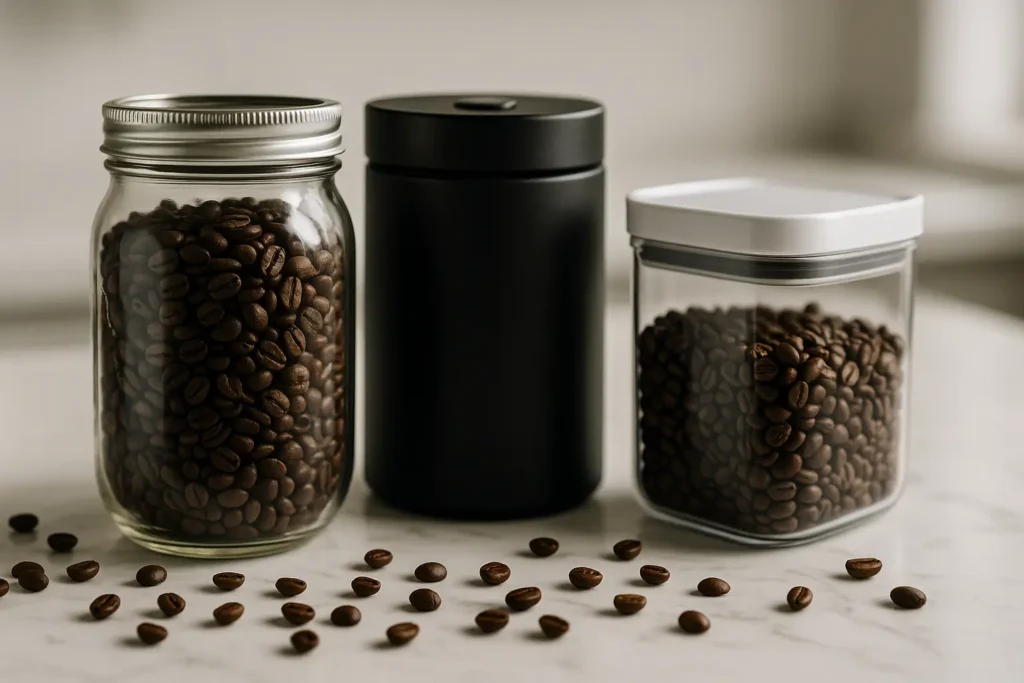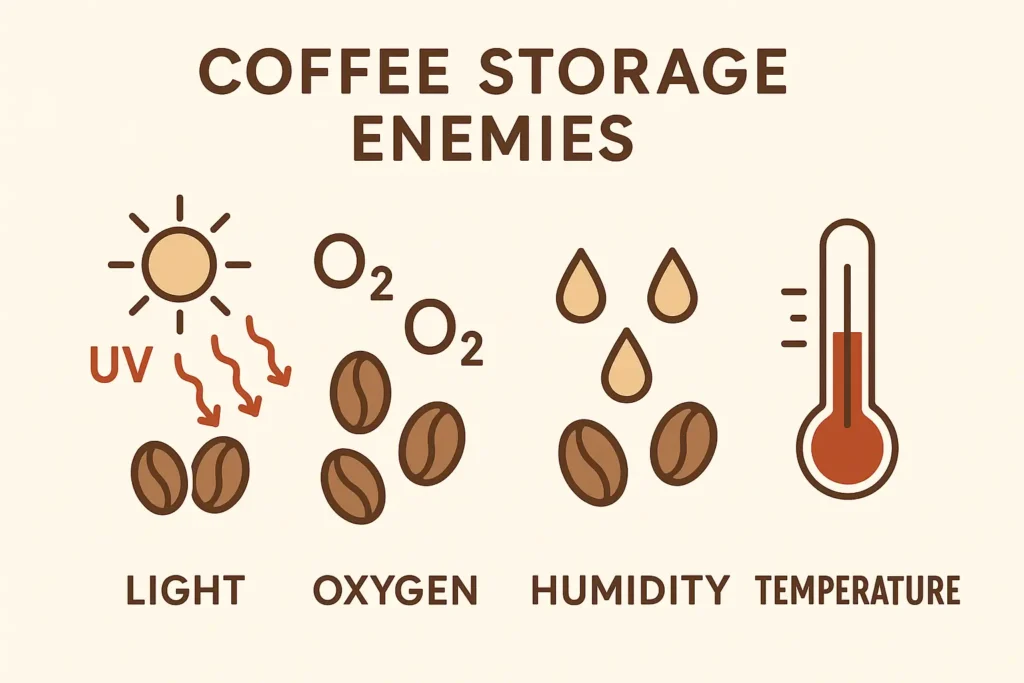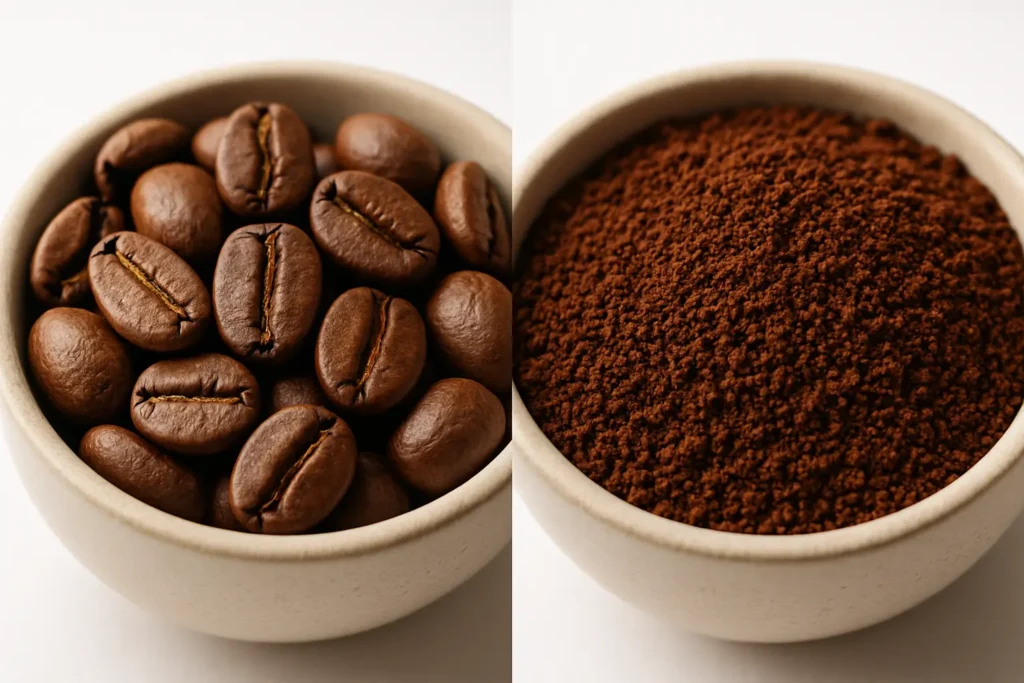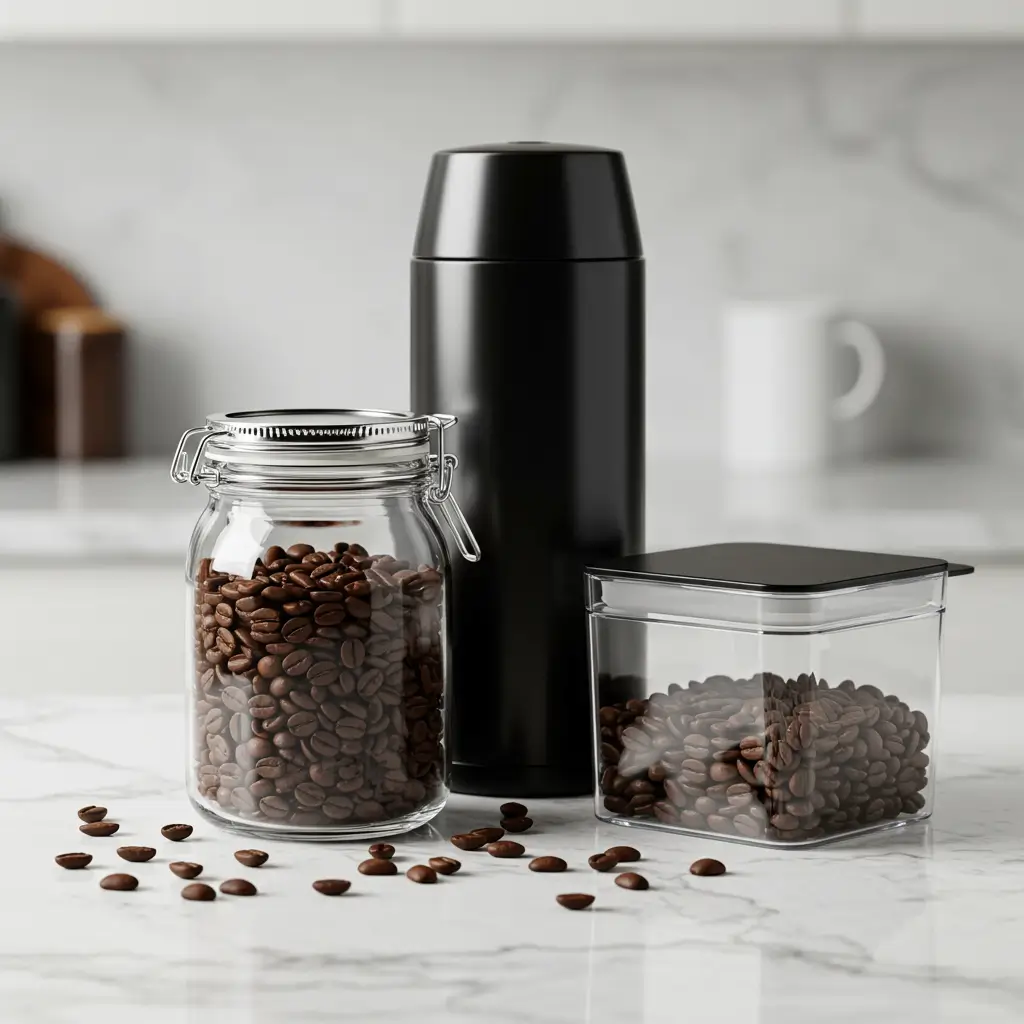Nothing ruins your morning ritual quite like stale, flavorless coffee. However, proper coffee bean storage transforms your daily brew from disappointing to delightful. Moreover, understanding how to store coffee beans correctly preserves their peak flavor and aroma for weeks longer than standard storage methods.

Whether you’re a casual coffee drinker or a dedicated enthusiast, mastering coffee storage techniques ensures every cup delivers the rich, complex flavors you crave. Furthermore, implementing these storage strategies protects your investment in quality beans while maximizing their shelf life.
Why Proper Coffee Bean Storage Matters
How Coffee Bean Oxidation Affects Flavor
Coffee beans begin deteriorating the moment they encounter oxygen. Additionally, this oxidation process breaks down the delicate oils that create your coffee’s distinctive taste profile. Therefore, exposure to air gradually transforms vibrant, aromatic beans into flat, lifeless grounds.
The oxidation process accelerates dramatically once you break the bean’s protective outer layer. Consequently, whole bean coffee maintains freshness significantly longer than pre-ground alternatives. Furthermore, understanding this chemical reaction helps you make informed decisions about your coffee storage methods.
The Science Behind Coffee Staleness
Fresh coffee beans contain volatile compounds that create their appealing aroma and flavor. Nevertheless, these compounds escape rapidly when beans lack proper protection from environmental factors. Subsequently, your coffee loses its complexity and develops unpleasant, bitter notes.
Carbon dioxide naturally escapes from freshly roasted beans through a process called degassing. However, excessive gas loss indicates your beans are aging too quickly. Therefore, monitoring this process helps you determine optimal storage timing and methods.
Coffee Bean Oils and Flavor Retention
Coffee bean oils carry the majority of flavor compounds that make each variety unique. Unfortunately, these oils become rancid when exposed to light, heat, and oxygen over time. Consequently, protecting these precious oils becomes crucial for maintaining coffee quality.
Premium coffee beans contain higher concentrations of these flavor-carrying oils. Thus, expensive single-origin and specialty coffees require extra attention to storage conditions. Moreover, proper storage techniques preserve these investments while ensuring maximum flavor extraction.
Coffee Bean Storage Enemies: What to Avoid

Light Exposure and UV Damage
Sunlight and artificial lighting gradually degrade coffee beans through UV radiation. Similarly, fluorescent lights in kitchens accelerate the breakdown of flavor compounds. Therefore, storing beans in dark locations protects them from this invisible threat.
Even brief exposure to direct sunlight can damage coffee beans permanently. Furthermore, transparent storage containers offer no protection against light-induced deterioration. Consequently, choosing opaque storage solutions becomes essential for long-term freshness.
Air and Oxygen Impact on Freshness
Oxygen represents the primary enemy of fresh coffee beans. Additionally, each exposure to air accelerates the staling process exponentially. Therefore, minimizing air contact through proper storage techniques dramatically extends bean life.
Standard coffee bags provide minimal protection once opened. Moreover, leaving beans in original packaging guarantees rapid flavor loss. Subsequently, transferring beans to airtight containers immediately after purchase preserves their quality.
Humidity Control for Bean Preservation
Moisture absorption causes coffee beans to lose their crisp texture and develop off-flavors. Furthermore, high humidity environments encourage mold growth on stored beans. Therefore, controlling moisture levels becomes critical for safe, flavorful storage.
Bathroom and kitchen environments often contain excessive humidity for coffee storage. Additionally, temperature fluctuations create condensation that damages beans. Consequently, selecting storage locations with stable humidity levels protects your investment.
Temperature Fluctuations and Storage
Extreme temperatures accelerate chemical reactions that degrade coffee quality. Moreover, rapid temperature changes cause beans to expand and contract, releasing precious oils. Therefore, maintaining consistent storage temperatures preserves flavor integrity.
Heat sources like stoves and dishwashers create hostile environments for coffee storage. Furthermore, temperature variations stress bean cellular structure, leading to premature aging. Subsequently, choosing stable temperature locations ensures optimal preservation.
Best Coffee Storage Containers and Methods
Airtight Containers vs. Vacuum Canisters
Airtight containers provide excellent protection against oxygen exposure for daily coffee storage. However, vacuum canisters offer superior preservation by removing existing air from storage chambers. Therefore, choosing between these options depends on your consumption patterns and budget.
Standard airtight containers work effectively for beans consumed within two weeks. Additionally, these containers offer convenient access for daily brewing routines. Nevertheless, vacuum canisters provide better long-term protection for bulk purchases or infrequent use.
Mason Jars and Glass Storage Solutions
Mason jars create effective airtight seals while allowing visual monitoring of bean levels. Furthermore, glass containers don’t absorb odors or flavors from previous contents. However, transparent glass exposes beans to harmful light unless stored in dark locations.
Quality glass storage containers resist staining and maintain their seal integrity over time. Additionally, wide-mouth designs facilitate easy bean access and cleaning. Nevertheless, combining glass containers with opaque outer coverings provides optimal protection.
Vacuum Sealed Coffee Storage Options
Vacuum sealing removes oxygen completely, creating ideal storage conditions for coffee beans. Moreover, this method works exceptionally well for long-term storage or bulk purchases. Therefore, investing in vacuum sealing equipment benefits serious coffee enthusiasts.
Professional-grade vacuum containers maintain their seal for months without degradation. Furthermore, these systems allow portion control while preserving the remaining beans. Subsequently, vacuum sealing represents the gold standard for coffee preservation.
Coffee Bean Storage Locations: Where to Store
Pantry Storage: Ideal Conditions
Pantries typically provide stable temperatures and protection from light exposure. Additionally, these locations maintain consistent humidity levels throughout the year. Therefore, pantry storage often creates optimal conditions for coffee bean preservation.
Choose pantry shelves away from heat sources like water heaters or heating vents. Furthermore, elevated storage prevents moisture damage from potential flooding. Moreover, dedicated coffee storage areas in pantries simplify your daily routine while protecting bean quality.
Kitchen Counter Storage (Pros and Cons)
Counter storage offers ultimate convenience for daily coffee preparation. However, kitchen counters expose beans to temperature fluctuations and light damage. Therefore, counter storage works best with opaque containers and frequent bean consumption.
Morning sunlight streaming through windows can damage counter-stored beans rapidly. Additionally, heat from appliances creates unstable storage conditions. Nevertheless, counter storage remains practical when you consume beans within one week of opening.
Should You Freeze Coffee Beans?
Freezing coffee beans preserves freshness for extended periods when done correctly. However, improper freezing techniques can damage bean structure and introduce moisture. Therefore, understanding proper freezing methods becomes essential for long-term storage.
Divide beans into single-use portions before freezing to avoid repeated thawing cycles. Additionally, use airtight containers to prevent freezer burn and odor absorption. Furthermore, allow frozen beans to reach room temperature before grinding to prevent condensation damage.
Refrigerator Storage: When It Works
Refrigerators provide cool, stable temperatures that slow bean deterioration. Nevertheless, humidity and odor absorption present significant challenges for refrigerator storage. Therefore, refrigerator storage requires special precautions and containers.
Double-wrap beans in airtight containers when using refrigerator storage. Additionally, avoid storing beans near strong-smelling foods that might transfer flavors. Moreover, maintain consistent refrigerator temperatures to prevent condensation formation.
Coffee Storage Tips by Bean Type and Usage
Whole Bean Coffee vs. Ground Coffee Storage
Whole bean coffee maintains freshness significantly longer than ground alternatives. Additionally, grinding exposes maximum surface area to oxygen, accelerating staling. Therefore, purchasing whole beans and grinding immediately before brewing ensures optimal flavor.

Ground coffee loses peak flavor within hours of grinding under normal storage conditions. Furthermore, pre-ground coffee requires more aggressive storage methods to maintain acceptable quality. Subsequently, investing in a quality grinder transforms your coffee experience while simplifying storage requirements.
Single-Origin and Specialty Coffee Care
Premium single-origin coffees deserve extra attention to storage conditions. Moreover, these expensive beans showcase subtle flavor notes that disappear quickly without proper care. Therefore, investing in superior storage methods protects your specialty coffee investments.
Specialty coffees often feature unique processing methods that affect storage requirements. Additionally, these beans may have different optimal storage timeframes than commercial alternatives. Furthermore, understanding each coffee’s specific characteristics helps you tailor storage approaches accordingly.
Roasted Coffee Beans: Degassing and Storage
Freshly roasted beans release carbon dioxide for several days after roasting. However, this degassing process indicates peak freshness and flavor development. Therefore, allowing proper degassing while preventing excessive gas loss requires careful timing.
Wait 24-48 hours after roasting before sealing beans in airtight containers. Additionally, one-way valves on coffee bags allow degassing while preventing oxygen entry. Moreover, understanding degassing timing helps you identify optimal consumption windows.
How Long Do Coffee Beans Stay Fresh?
Properly stored whole bean coffee maintains peak flavor for 2-3 weeks after roasting. Furthermore, coffee remains drinkable for 2-3 months under ideal storage conditions. However, flavor quality gradually declines throughout this period.
Ground coffee loses optimal flavor within 1-2 weeks of grinding. Additionally, exposure to air accelerates this timeline significantly. Therefore, grinding beans immediately before brewing ensures maximum flavor extraction and enjoyment.

Protect Your Coffee Investment
Mastering coffee bean storage techniques dramatically improves your daily coffee experience while protecting your investment in quality beans. Moreover, implementing these strategies costs little but delivers significant returns in flavor and freshness.
Start by evaluating your current storage methods and identifying areas for improvement. Additionally, invest in quality airtight containers that match your consumption patterns. Furthermore, remember that small changes in storage habits create substantial improvements in coffee quality.
Ready to transform your coffee experience? Begin implementing these storage techniques today and taste the difference proper preservation makes. Moreover, share your storage success stories and favorite methods with fellow coffee enthusiasts. Your perfect cup awaits – protect it with proper storage techniques that preserve every precious drop of flavor.

